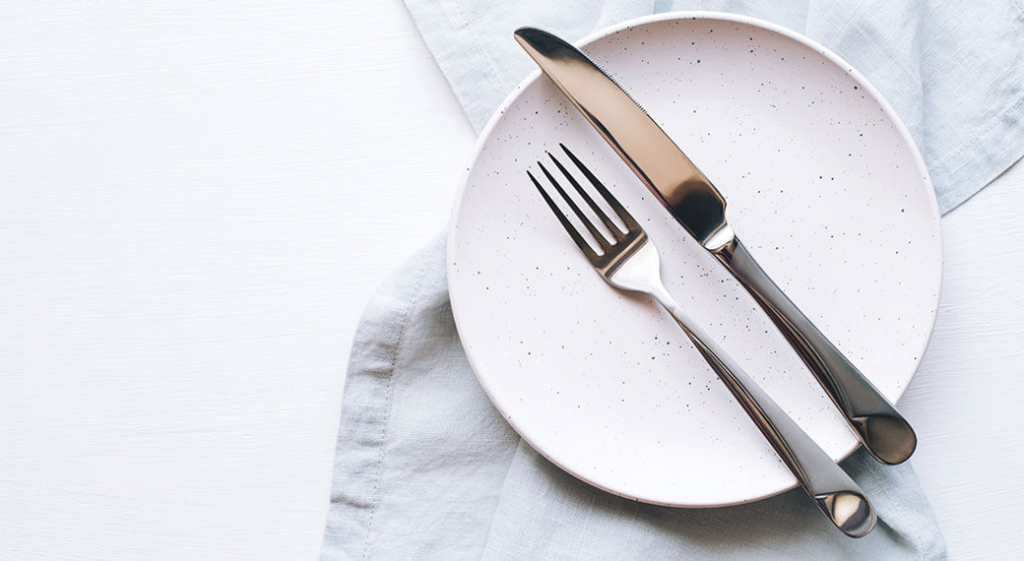When it comes to choosing professional flatware for your foodservice establishment, one of the most important factors to figure out is which grade of stainless steel will work best for your restaurant.
Stainless steel is a popular material used in flatware due to its durability, corrosion resistance, and ease of maintenance. There are various grades of stainless steel used for flatware, each with different properties and characteristics. In this article, we help you decide the right grade stainless steel for your establishment by comparing durability, price, aesthetic appeal, and more.
Decoding Stainless Steel Grades for Your Restaurant Flatware
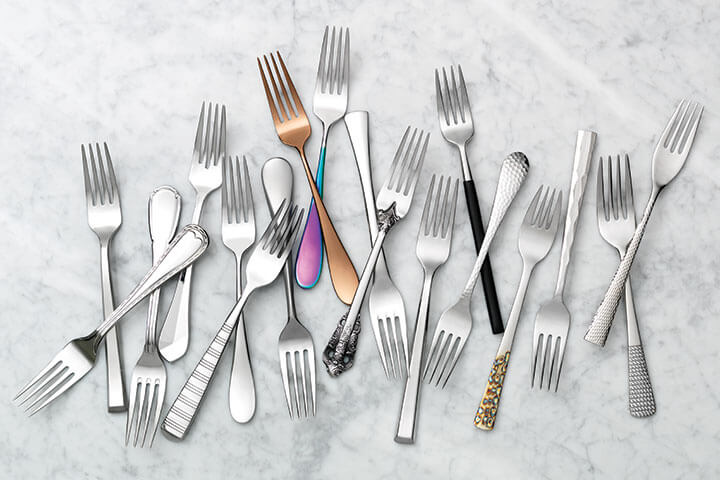
When considering which grade of stainless steel would work best for your business and budget, it’s important to first note the similarities and differences between the common grades—18/10, 18/8, and 18/0—of commercial flatware used in the restaurant industry. The first number, 18, indicates the level of chromium, which adds toughness and resilience to steel. The second number indicates the levels of nickel.
All three grades of stainless steel are durable, making them suitable for years of continued use within a busy professional environment. Similarly, all three grades are corrosion-resistant, easy to clean, and safe for use in commercial dishwashers (however it is always wise to defer to manufacturer recommendations).
The main difference between the three types of stainless steel is the amount of nickel each grade holds. 18/10 stainless steel has the most nickel, followed by 18/8 stainless steel, and 18/0 stainless steel. The amount of nickel contained within the stainless steel affects many qualities of flatware, bringing about both benefits and drawbacks to each grade, which we will now examine in detail.
18/10 Stainless Steel Flatware
This grade of stainless steel contains 10% nickel.
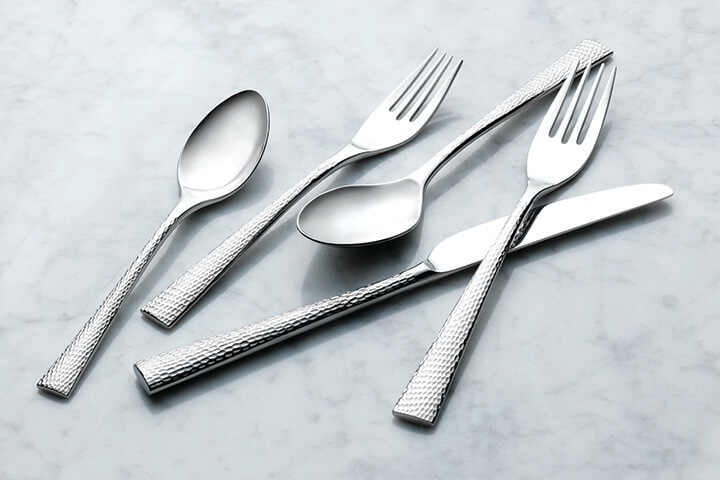
- Corrosion resistance: 18/10 stainless steel is highly resistant to corrosion and staining, making it suitable for use everywhere, including very humid environments or with acidic foods.
- Durability: This grade of stainless steel is durable and resistant to wear and tear, making it suitable for everyday professional use in high-volume establishments.
- Aesthetic appeal: The high nickel content gives the steel a bright, shiny finish that looks great on flatware. It is the most common grade of stainless steel used in fine-dining restaurants, in part for its high luster.
- Price: 18/10 stainless steel is the most expensive grade, which may make it less accessible for some buyers. However, it is an investment in quality and longevity.
- Weight: The high nickel content makes this steel heavier than other grades, which may be a drawback for some users. Some diners have noted that the heavier steel gives their utensils a bulky feeling. If weight is a potential factor for your guests, they may prefer a sleek and slender 18/10 flatware design.
18/8 Stainless Steel Flatware
This stainless steel contains 8% nickel. It is also known as 304 stainless steel.
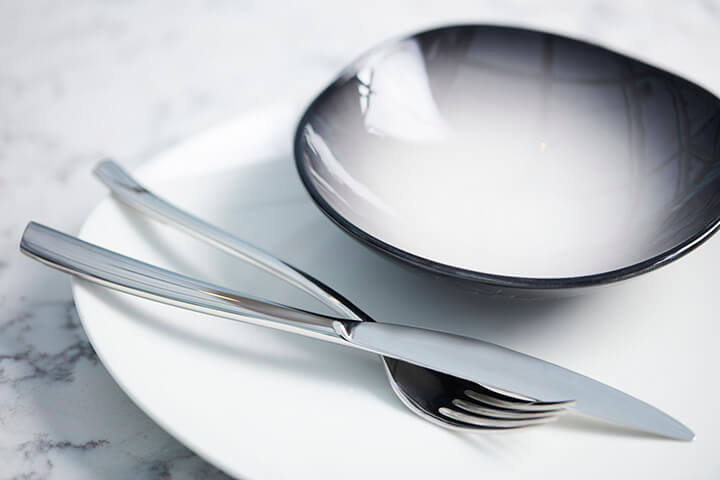
- Corrosion resistance: 18/8 stainless steel is highly resistant to corrosion and staining, making it suitable for use in humid environments or with acidic foods.
- Durability: This grade of stainless steel is durable and resistant to wear and tear, making it suitable for everyday commercial use. It is also slightly less durable and less rust-resistant than 18/10, however the difference is small enough that most people simply would not notice. 18/8 grade is still very durable and can withstand years of use.
- Aesthetic appeal: This grade has shine and luster to its appearance. However, the lower nickel content means that 18/8 stainless steel is not as shiny as 18/10 flatware pieces.
- Price: 18/8 stainless steel is more affordable than 18/10 stainless steel, which may make it a better option for some buyers who are looking for quality without breaking the bank.
- Weight: The high nickel content makes this steel heavier than 18/0, which may be a drawback for some users. It is slightly lighter than 18/10 flatware.
18/0 Stainless Steel Flatware
This grade of stainless steel contains no nickel. It is also known as 430 stainless steel.
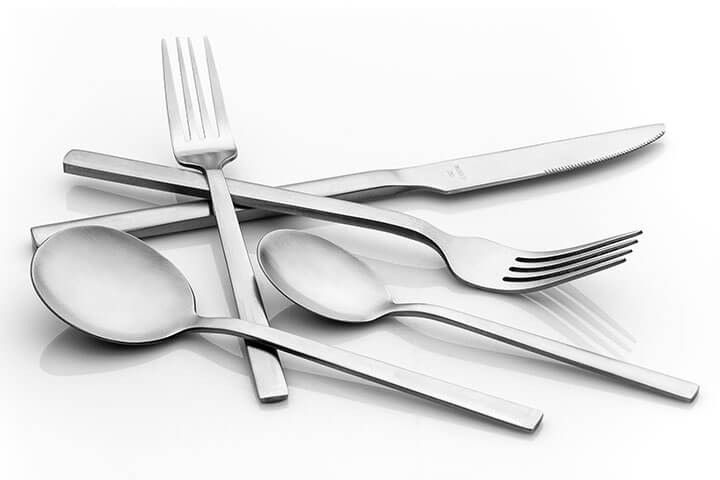
- Corrosion resistance: The chromium content of 18/10 stainless steel affords it some corrosion resistance, however, to a noticeable lesser degree than 18/10 and 18/8. Out of the three grades, it is most likely to react to acidic foods and will have a shorter lifespan in humid environments.
- Durability: 18/0 stainless steel is less durable than 18/10 and 18/8 and may show signs of wear and tear after repeated use in a commercial dishwasher. However, these flatware pieces still last for years and are suitable for commercial use.
- Aesthetic appeal: Due to its lack of nickel, this grade of stainless steel isn’t especially shiny. This aesthetic works best for casual dining, rustic, farm-to-table, and industrial design motifs.
- Price: 18/10 stainless steel is the most economical option of the three grades, making it accessible to most buyers.
- Weight: The absence of nickel makes 18/10 stainless steel utensils a light-weight option.
Which Grade of Stainless Steel Is Best for Your Restaurant?
The best grade of stainless steel flatware for a restaurant will depend on the specific needs of the establishment. For example, a fine dining restaurant that wants to provide its guests with the highest quality flatware will likely choose 18/10 stainless steel. A mid-range or casual restaurant that is looking for a more affordable option may choose 18/8 stainless steel. And a restaurant with a high turnover of flatware may opt for 18/0 stainless steel because it is less expensive to replace. What grade of stainless steel does your restaurant prefer and why? Let us know in the comment section!

